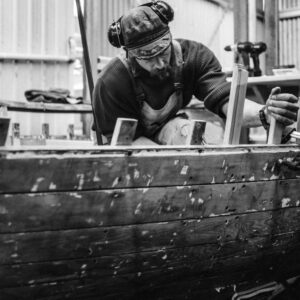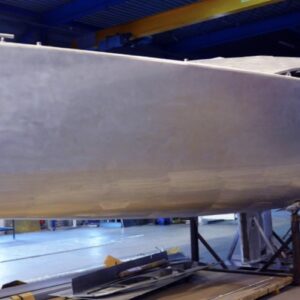Trade Secrets: We asked Hamish: can you use epoxy with metals?
Here at Epoxycraft, we spend most of our time explaining how to use epoxy with wood and plastics. But what about metals…will it stick to them? Yes it most definitely will, says our technical expert Hamish Cook – as long as you prepare the metal in the right way.
I often get asked if it’s possible to use epoxy with metals. If it’s something a bit exotic like platinum, I’ll always speak to our chemist first before giving advice. However, typically our customers ask us about metals such as stainless steel and aluminium.
The basic answer to the question “can you use epoxy with steel and aluminium?” is yes, you can – but the trick is to make sure you’ve prepared the surface thoroughly first, to get it back to ‘bright metal’.
So how do you achieve the ‘bright metal’ surface you need? There are a couple of methods, as I explain below.
1. Scrupulous abrasion
The first method is to degrease your metal surface and then abrade it scrupulously to remove any paints, rust or other contaminants in order for your epoxy blend to adhere. This is the best method for steel of all types.
If you’re preparing a small area of steel (for a repair, for instance), you can just use 80 grit paper or an angle grinder until you have evenly bright metal across the whole surface. For larger areas it would be quicker to grit-blast the surface. In any case, you’re looking to get the metal to surface preparation standard SA 2.5, which is near-white metal.
You then need to ensure the surface is well degreased (again) before you apply your epoxy blend and that application should be soon as possible after abrading – ideally within four hours.
2. Acid etching
When bonding to aluminium, you’ll need to degrease it first as above. Then – if intending to use WEST SYSTEM 105 Epoxy Resin® mixed with 205 Fast Hardener® – you must chemically etch the surface with an etching compound or sulphuric acid/sodium dichromate solution. This primes the surface for adhesion to your epoxy.
However, chemical etching isn’t necessary at all if you’re using G/flex® epoxy.
The G/flex epoxy difference
WEST SYSTEM G/flex epoxy was specifically created in order to improve the adhesion of epoxy to plastics – and to aluminium. With G/flex adhesive you simply need to scrupulously abrade your metal surface as per the previous section. In fact, our product testing has shown that degreasing, abrading, degreasing again and using G/flex epoxy results in a stronger bond than the traditional acid etching method plus 105/205 epoxy mix.
A note about wet sanding
It’s also worth bearing in mind that most metals will benefit from wet sanding through the epoxy when it’s freshly applied. After you apply the epoxy to your prepared surface, rub a new, clean wire brush over it while it’s still uncured and liquid. This will create more scratches in the surface and promote even greater adhesion of the epoxy to the metal.
Where to find more help
For more detailed instructions on how to prepare specific metal surfaces for bonding with epoxy, make sure you take a look at page 12 of the West System International User Manual and Product Catalogue which you can find here.
Have you got a question to ask Hamish? Email us and we may even feature it in a future edition of Epoxycraft!



